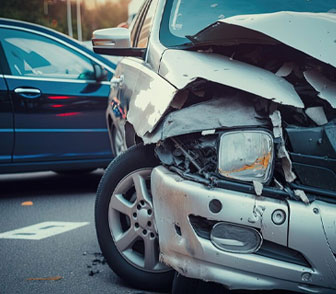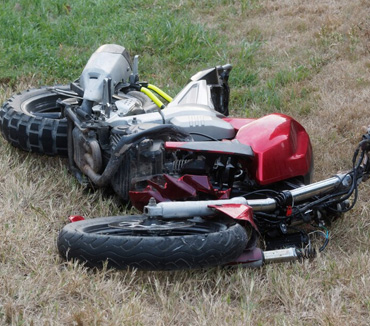Steps in a Personal Injury Lawsuit
While the thought of filing a lawsuit after an accident may seem overwhelming, you should understand the process before the need arises. Motor vehicle collisions, slip and fall accidents, construction accidents, and defective product malfunctions can all lead to serious and debilitating injuries. Common injuries sustained in these types of accidents include bone fractures, soft tissue injuries, traumatic head and brain injuries, and internal injuries, to name only a few.
If you suffered injuries in an accident caused by someone else, you might be eligible to file a personal injury claim. The personal injury claims process can be complicated, and it is important that you have a knowledgeable Southern California personal injury lawyer advocating for you at all times.
What Is a Personal Injury Lawsuit?
A personal injury lawsuit is a civil action filed by an injured person against the person or entity responsible for their injuries. The person who has been injured and files the case is referred to as the “plaintiff,” and the people he or she sues are referred to as the “defendant(s).” The goal of a personal injury lawsuit is to recover damages, financial compensation & for the injuries caused by the negligence or recklessness of another.
Personal injury lawsuits are typically filed after an accident or injury has occurred, and can be filed against individuals, businesses, or government entities. If you have been injured in an accident, you may be wondering if you have a personal injury case. The best way to find out is to speak with an experienced personal injury attorney at Duque Law Group who can evaluate your case and advise you on your legal options.
Steps in a Personal Injury Lawsuit
The majority of personal injury cases settle long before going to trial. However, some cases may make it all the way to court depending on the specific circumstances. Some cases may involve certain complexities that make it challenging to prove responsibility. In contrast, others may fail to reach an agreeable settlement between the claimant and the defendant.
To better understand what to expect with a personal injury case from a claim to the lawsuit, we have compiled a list of the main steps in the personal injury claim process.
Let’s take a look at the personal injury lawsuit steps that are involved in most cases:
1. Attorney Consultation
During this meeting, your attorney will discuss your options and rights, advise you of the best courses of action, interview you regarding the facts of your accident, and discuss representation details including attorney’s fees.
2. Investigation and Fact-Gathering
In this stage, your attorney and trusted associates will investigate the facts of your accident, interview witnesses, and gather documents and other evidence to help prove your case.
3. Documents Filed
The initial documents will be filed in court, which sets forth the claims and defenses of the parties. Generally, a court case begins with the filing of the plaintiff’s Complaint, to which the defendant needs to file an Answer.
4. Service and Answer
Next, the injury attorney will deliver a copy of the petition to the defendants through a formal process called “service.” The defendants then will file an “answer” with the court by responding to the plaintiff’s claims.
5. Discovery
Your attorney will gather pertinent testimony, documents, evidence, and information. Written discovery includes interrogatories and requests for documents. Oral discovery involves depositions of witnesses and experts.
6. Pretrial Motions
The parties may file motions to ask the Court to rule on issues, take action on their behalf, either to dismiss one of your claims, or dismiss the entire case.
7. Mediation
Mediation can take place at any time throughout the court case. This alternative dispute resolution approach involves both parties, their lawyers, and a mediator. The cases on both sides are presented and settlement negotiations begin, but these are non-binding. Neither party has to agree to accept or deny.
8. Trial
If the case does not settle before trial, other procedures will follow. These begin with a “docket call,” at which the judge rules on any pending pretrial motions. That is followed by “Voir Dire,” the process by which a jury is selected to hear the case. And that is followed by the trial. Even after the trial an appeal may follow, prolonging the process even further.
9. Verdict and Final Judgment
If there is a jury trial, the jury will deliberate and render its verdict, essentially choosing the side that wins the case. The judge issues a final judgment.
What Are the Possible Outcomes and How Do They Occur?
There are many different outcomes that can happen during the personal injury lawsuit process. For example:
- A case may be dismissed, based on a motion by the defendant, if the court finds that there are no grounds for the lawsuit.
- A default judgment can be issued if the defendant fails to respond to the allegations of the Complaint.
- A case might be settled outside of court through negotiation, mediation, or another form of alternative dispute resolution.
- After a full trial, a jury verdict can be issued for one of the parties, essentially determining the winner of the lawsuit.
When Might You Have a Claim?
The law of personal injury provides that if a person or entity causes an accident or does something that results in injury to another person, then that party can be held responsible for the injured party’s losses within a certain time period.
Physical Injuries
- Loss of limb
- Disfigurement
- Scars
- Loss of mobility functionality
Mental Injuries
- Emotional trauma
- Pain and suffering
- Mental anguish
- Loss of cognitive abilities
- Loss of companionship and enjoyment
- Loss of emotional control
Common Types of Personal Injury Lawsuits
Common types of accidents that often result in a personal injury lawsuit include:
- Car accidents
- Slip and fall accidents
- Workplace injuries
- Truck accidents
- Motorcycle accidents
- Bicycle accidents
- Pedestrian accidents
- Dog bites
- Driving under the influence (DUI)
- Distracted driving
- Aggressive driving
Seek Immediate Medical Care and Follow Your Doctor’s Orders
Any accident caused by the negligent actions of another person is a traumatic event. The first step following an accident is to seek medical attention immediately. Even if you do not see any obvious signs of trauma, it is best to accept medical transport to a hospital anyway. Silent injuries, such as internal bleeding, may be fatal without you even knowing you are suffering from it.
While it is often difficult to focus after an accident due to the commotion and trauma, it is important to remain calm. Take photos of the scene or ask witnesses to help you. Do not speak with the other driver and wait for first responders to arrive. Cooperate with law enforcement. Refrain from acknowledging responsibility for the accident since any statements you provide may serve as valuable evidence for future litigation. Next, contact a personal injury lawyer without delay.
Should You Speak with an Attorney?
Our legal team at Duque Law Group is comprised of award-winning and nationally recognized trial lawyers who collaborate with nurses, doctors and medical experts regularly. Though we understand the nature of injuries, we are not physicians, and always encourage victims to seek treatment as soon after an accident as possible, and to follow up and heed their doctors’ advice.
Call us now at 1-877-241-9554 to learn more about your options. A free consultation is just a phone call away.
Request A
Free Consultation
Fields Marked With An ” *” Are Required










